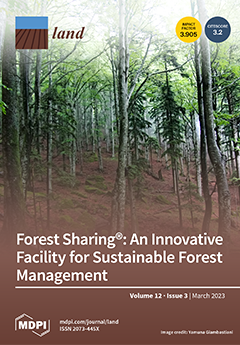(1) Background: the broadcast is an outdated fertilization method with a low fertilizer-utilization rate and environmental problems, which seriously restricts the development of agriculture. (2) Methods: Under a machine-transplanted rice with side-deep fertilization (MRSF) mode, five treatments were applied: 0 cm (D0), 5
[...] Read more.
(1) Background: the broadcast is an outdated fertilization method with a low fertilizer-utilization rate and environmental problems, which seriously restricts the development of agriculture. (2) Methods: Under a machine-transplanted rice with side-deep fertilization (MRSF) mode, five treatments were applied: 0 cm (D0), 5 cm (D5), 7.5 cm (D7.5), and 10 cm (D10), comprising four different depths of fertilization, and no fertilization (CK). The yield, the accumulation of N and P in the straw and in grains of rice, concentrations of N and P in the surface water, ammonia (NH
3) volatilization, and soil nutrients were measured in rice fields. (3) Results: In rice yields, compared with the D0 treatment, only the D7.5 treatment significantly increased by 7.84% in late rice, while the other treatments showed no significant difference between early and late rice. The N- and P-use efficiency of D10 increased by 5.30–24.73% and 0.84–17.75%, respectively, compared with the D0-D7.5 treatments. In surface water, compared with the D0 treatment, D5, D7.5, and D10, the total N (TN), total P (TP) concentration, and NH
3 volatilization decreased by 10.24–60.76%, 16.30–31.01%, and 34.78–86.08%, respectively; the D10 treatment had the best inhibition effect on the TN, TP concentration, and NH
3 volatilization, which were 58.48–60.76%, 22.04–31.01%, and 77.21–86.08%, respectively. (4) Conclusions: The optimized depth for side-deep fertilization was 10 cm. We would like to emphasize the impact of the paddy on various deep fertilizations and provide an important reference for developing precise fertilization in rice fields in this area.
Full article





